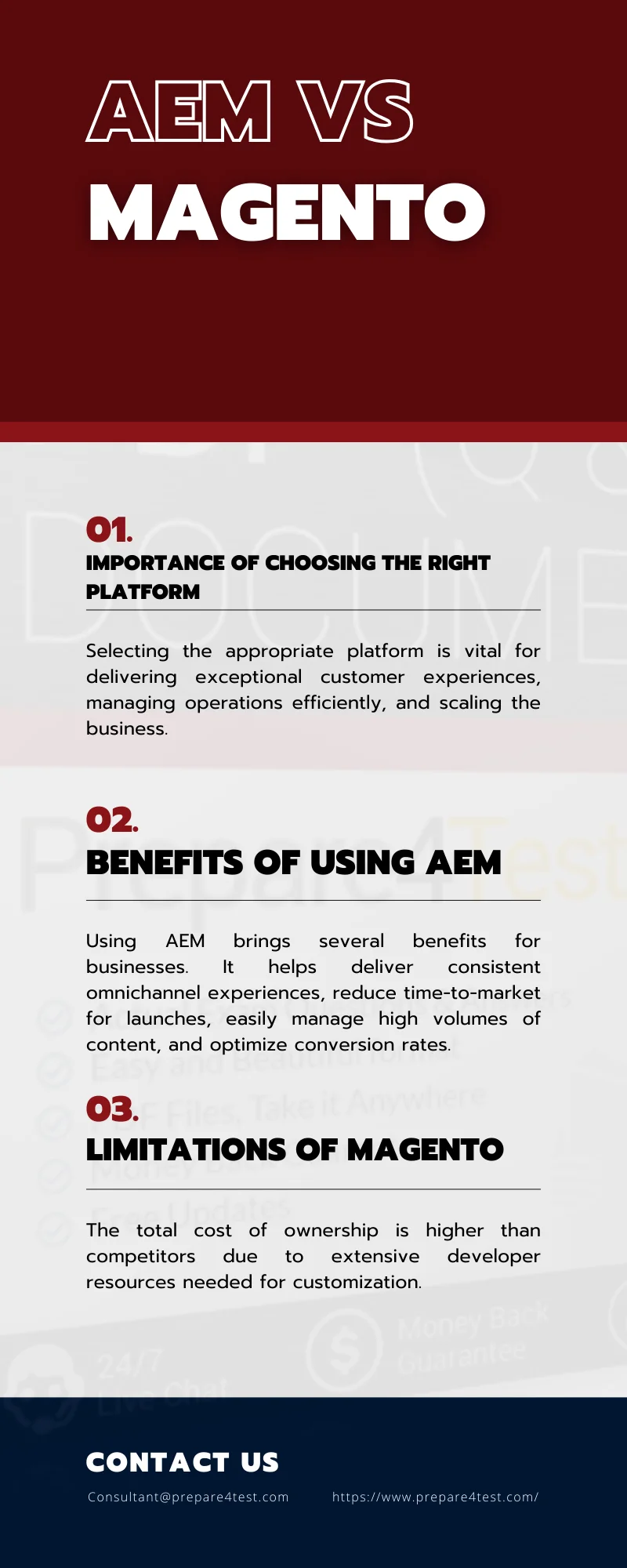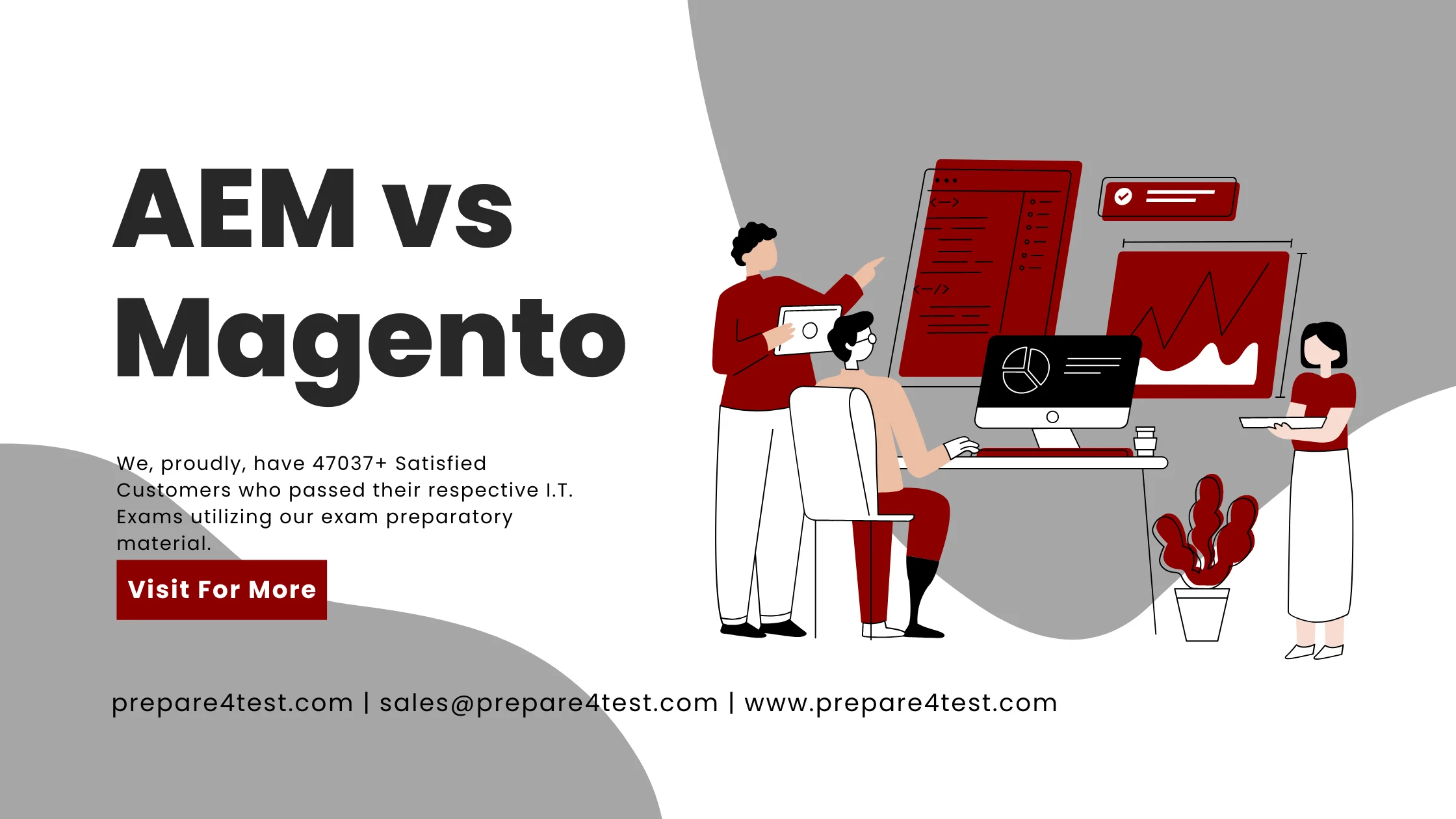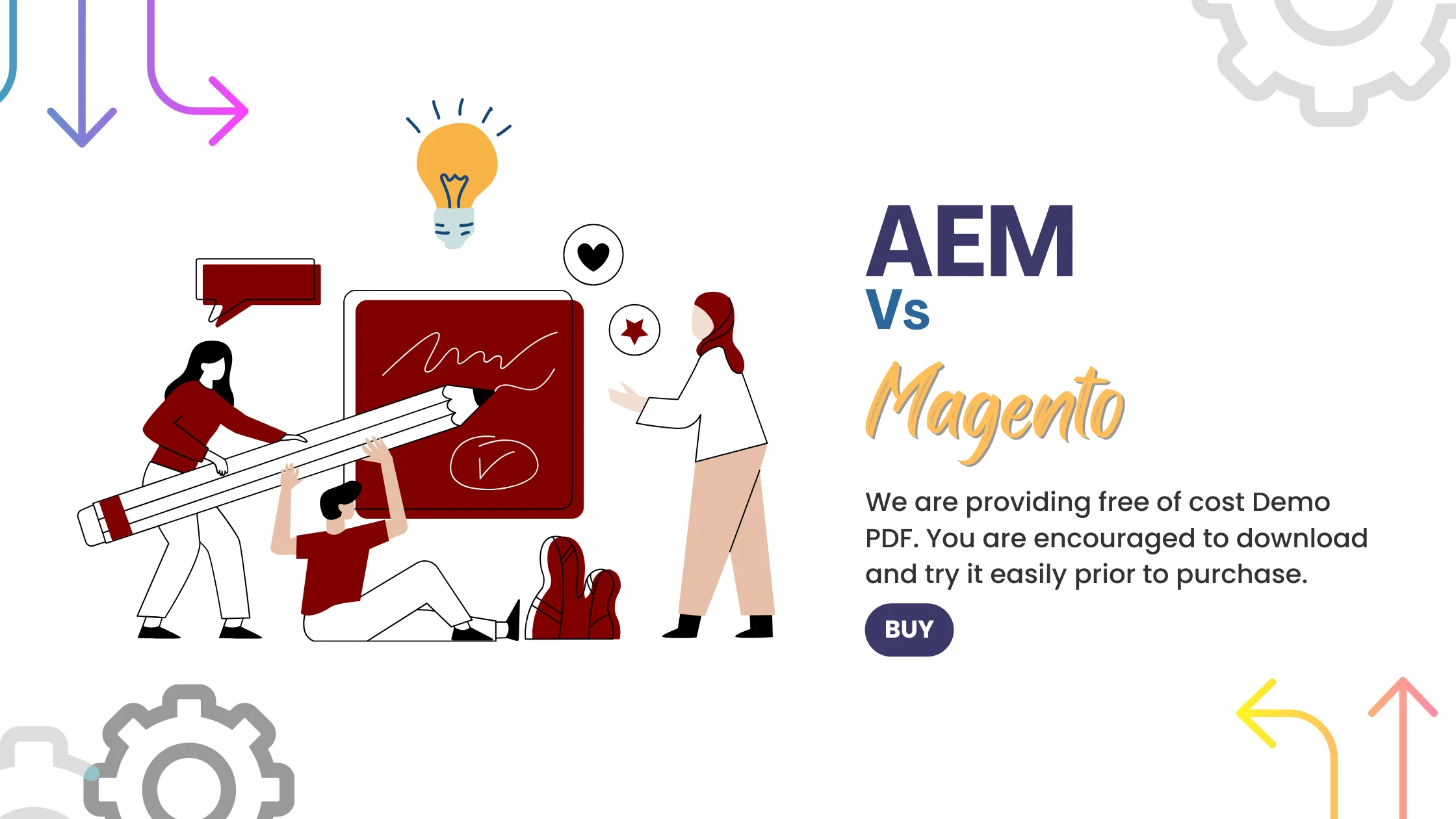
Choosing the right e-commerce platform is crucial for online businesses to provide a seamless shopping experience. The two leading options are AEM vs Magento, which offer robust features but differ significantly. In this article, a brief overview of both platforms and compares them to help companies select the best fit.
AEM is a flexible content management and digital asset management system suitable for large enterprises. It allows centralized control over content across channels through its sites, assets, forms, and community features.
On the other hand, Magento specializes in e-commerce functionalities like catalog management, shopping cart, checkout, and order processing flows. It is scalable enough for small and large online stores.
While AEM focuses on content, Magento concentrates on commerce. AEM handles content creation and management smoothly, while Magento excels in storefront experience and shopping journeys.
Importance of choosing the right platform
Selecting the appropriate platform is vital for delivering exceptional customer experiences, managing operations efficiently, and scaling the business. The capabilities, integration needs, and resources available determine if AEM or Magento is a better match.
Purpose of the article
This article compares AEM and Magento across various parameters like features, use cases, scalability, and total cost of ownership. It aims to educate readers on the pros and cons so that companies can determine which solution aligns better with their business goals and budget.
AEM: Features, Benefits, and Limitations

Adobe Experience Manager (AEM) is a flexible web content management and digital asset management system suitable for enterprises. It allows centralized control over content across channels through its robust features.
AEM enables seamless content authoring with its user-friendly interface. It also provides workflow automation, version control, and collaboration tools. Key e-commerce capabilities include product information management, promotions, personalized experiences, and integration with payment gateways.
Benefits of using AEM
Using AEM brings several benefits for businesses. It helps deliver consistent omnichannel experiences, reduce time-to-market for launches, easily manage high volumes of content, and optimize conversion rates.
Marketers can create targeted campaigns and promotions as AEM integrates with Adobe Analytics for segmentation. Developers can build feature-rich sites quickly using out-of-the-box components.
Limitations of AEM
However, AEM has limitations too. The high total cost of ownership due to license fees and resource needs causes budget constraints sometimes. Complex implementations often require extensive developer training and expertise as well.
While AEM covers content and commerce, it does not specialize in advanced e-commerce workflows. Adobe Commerce offers more flexibility and scalability for b2b and B2C models with its focus on storefront experience.
So companies should evaluate their exact requirements before finalizing either AEM or Adobe Commerce. The integration capabilities also allow leveraging both platforms if needed.
Magento: Features, Benefits, and Limitations
Magento is a leading open-source e-commerce platform written in PHP. It provides robust features to build and manage online stores. Magento was acquired by Adobe in 2018 and rebranded as Adobe Commerce.
The core capabilities offered by Magento include catalog and content management, promotions engine, shopping cart and checkout functionality. It also enables order processing workflows like payments, shipping, taxes, and returns/refunds.
Benefits of using Magento
Using Magento brings several benefits for e-commerce businesses. Its flexible architecture allows both small shops and large enterprises to leverage it. Developers can easily extend or customize Magento using its APIs.
It enables omnichannel commerce with capabilities for B2B and B2C models. Marketers can create targeted campaigns and personalized shopping experiences due to its segmentation features. The single-page checkout feature helps improve conversion rates.
Limitations of Magento
However, Magento also has some limitations. The total cost of ownership is higher than competitors due to extensive developer resources needed for customization. Also, the learning curve for non-technical users can be steep sometimes.
While Magento covers the entire shopping journey, it does not specialize in advanced content authoring and management capabilities. So companies with complex content needs may prefer Adobe Experience Manager over Magento Commerce for greater flexibility.
AEM vs Magento: Comparison

Adobe Magento 2 and AEM are leading e-commerce and content management platforms. While Magento specializes in commerce, AEM focuses more on content. This article compares them across various aspects to help businesses select the right platform.
Comparison of features and functionalities
E-commerce capabilities
Magento offers robust e-commerce features for catalog, cart, and checkout management. It also handles order processing, payments, promotions, and reporting seamlessly. AEM provides basic commerce capabilities, but for advanced functionality, integration with Magento is required.
Customization options
Both Magento and AEM allow extensive customization to tailor platforms to unique business needs. However, Magento offers more flexibility to customize checkout flows, promotions logic etc through code modifications.
Content management capabilities
AEM excels in content authoring, version control and omnichannel content delivery. Magento handles product content well, but has limitations for advanced content repository needs.
SEO and marketing features
Magento enables SEO-friendly URLs, meta tags management for better discoverability. AEM also provides out-of-the-box SEO-optimization. Both platforms allow integration with analytics for segmentation.
Integration with third-party tools and systems
Magento and AEM offer extensive integration capabilities with ERP, CRM, analytics, and other enterprise systems through APIs and connectors.
Performance and scalability
Both platforms are designed for enterprise scale and volume needs. AEM requires more hardware resources than Magento for optimal performance. CDN integration is recommended for both to reduce server load.
Cost considerations
Magento open-source edition is free but needs extensive developer efforts for custom stores. AEM licenses and resource costs are higher, leading to higher total cost of ownership. Comparing ROI over 3-5 years is advisable.
User-friendliness and ease of use
AEM offers a simpler learning curve for content editors than Magento backend for non-technical users. But both platforms require considerable training investment for administrators to master platform capabilities.
Flexibility and extensibility
Magento has a vibrant developer ecosystem for extensions and plugins to extend functionalities. AEM also provides integration toolkit for developers. Both platforms can be adapted to address complex and unique business needs.
So in summary, while Magento Commerce focuses on storefront experience, AEM concentrates on content management. Companies should align platform selection with their primary business requirements to maximize ROI.
Case Studies or Use Cases
Adobe Magento2 and AEM are widely used globally by leading enterprises for delivering exceptional e-commerce experiences.
Real-world examples of businesses using AEM
A large American lifestyle brand leverages AEM and Magento together to power omnichannel experiences across its stores, web, and mobile apps. AEM helps them manage huge volumes of product assets, campaigns and promotions efficiently.
Another global footwear brand uses AEM’s content authoring and personalization capabilities to engage customers across regions. They could increase conversion rates by over 20% after adopting AEM.
Real-world examples of businesses using Magento
A European fashion retailer selling across multiple brands uses Magento Commerce for smooth store operations across web and mobile channels. Magento’s order management system helped them scale rapidly.
Leading electronics brand offering B2B and B2C models uses Magento’s B2B features like account management, quotes, and company credit to provide the best self-service experience.
Analysis of success and challenges
The real-world examples showcase how both AEM vs Magento help global companies manage complex e-commerce needs. Choosing the right platform as per content vs commerce requirements is key for success.
However lack of in-house skills and extensive customizations often prove challenging for businesses adopting these platforms. So a phased rollout with the right partners is advisable to maximize ROI.
Conclusion
In summary, AEM vs Magento are both robust enterprise-grade platforms, but they cater to different primary needs.
AEM offers unmatched content authoring, omnichannel content delivery, and digital asset management capabilities. It enables seamless collaboration for large content volumes and campaigns.
On the other hand, Magento Commerce specializes in advanced e-commerce functions like promotions management, shopping flows, order processing etc. It provides great flexibility to customize storefront experiences via extensions and code modifications.
For online businesses selling across web, mobile, and in-store channels, using AEM and Magento together can be advantageous. AEM can power the content while Magento handles the commerce piece seamlessly.
Companies should carefully assess their content volume and structure needs along with e-commerce requirements before finalizing their technology stack. For predominantly content-focused organizations, AEM may suit them better than Magento and vice-versa.
The total cost of ownership is another vital parameter while making platform selection. The license fees, development costs, and resource requirements vary between AEM and Magento, impacting budgets.
Overall there is no single right choice. Aligning technology decisions with business priorities and having a phased roadmap is key to deriving maximum value, whether you select AEM or Magento.



